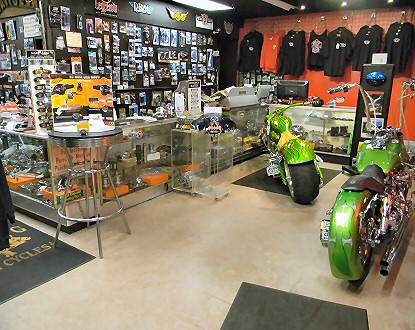Grasping Motorcycle Gears: How to Optimize Your Riding Experience
In the world of motorcycling, grasping the art of gear adjustment is essential for improving your riding performance. Effectively recognizing and using motorcycle equipments can substantially influence acceleration, control, and gas efficiency, transforming a typical ride right into a seamless, thrilling journey.
Understanding Gear Mechanics
How do the ins and outs of equipment mechanics affect motorbike efficiency? At the core of bike dynamics, gear mechanics play a crucial function in transforming engine power into activity, ultimately dictating rate and control. Gears, carefully crafted components, enable cyclists to maximize torque and speed, making certain a seamless transition via various terrains and speeds. The equipment ratios, thoroughly developed, figure out the partnership between engine transformations and wheel turns, affecting velocity and fuel performance.
Comprehending gear auto mechanics starts with recognizing the significance of the gearbox, which houses several gears of varying dimensions. These equipments connect with a process called meshing, where teeth of various equipments engage to send power. The accuracy of this interaction is crucial; any imbalance or damages can cause inefficient power transfer, preventing performance. Additionally, the setup and size of equipments influence the bike's capacity to manage various loads and speeds.
Furthermore, the idea of equipment changing is indispensable to making the most of efficiency. Smooth and timely changes ensure that the engine operates within its ideal power band, preventing unnecessary stress and boosting longevity (motorbike shop). By understanding these mechanical intricacies, bikers can accomplish a harmonious blend of control, power, and efficiency, raising their riding experience
Timing Your Shifts
Shift timing mastery is necessary for maximizing bike efficiency and boosting the riding experience. Properly timed changes ensure that the engine operates within its optimal power band, which is critical for maintaining control, achieving smooth velocity, and ensuring the longevity of the bike. Cyclists must create an instinctive sense of when to shift gears, which entails recognizing the partnership in between engine transformations per minute (RPM) and speed.
To understand change timing, pay close focus to the engine's audio and really feel, as these offer important clues about when to transform equipments. The suitable change point usually occurs when the engine approaches the top variety of its power band without reaching the redline. Changing as well early can lead to an absence of power, while moving too late might trigger unnecessary engine pressure
Furthermore, road problems and riding style impact shift timing. For example, in city settings, smoother and more regular shifts might be necessary to browse traffic successfully. On the other hand, during freeway riding, fewer changes at higher rates can be better suited. Exercising in different settings will boost your ability to time changes precisely, eventually boosting your riding experience to a professional degree.
Enhancing Fuel Effectiveness
While understanding motorcycle gears is crucial for performance, improving gas efficiency is similarly important for both ecological and financial factors. Optimal gas intake not just decreases functional expenses yet also reduces the eco-friendly footprint of riding. To attain this, one must comprehend the intricate connection between gear choice and engine efficiency.
Riding in a greater gear at reduced speeds can lead to engine hauling, which is destructive to both fuel economy and engine health. On the other find out here hand, riding in reduced gears at high rates results in unnecessary gas intake.
In addition, routine maintenance plays a pivotal duty in gas efficiency. Guaranteeing that the motorcycle is well-tuned, with clean air filters and properly blew up tires, can lower and improve aerodynamics gas waste. Moreover, embracing a riding design that welcomes progressive acceleration and smooth slowdown can add to far better fuel economic situation.
Techniques for Smooth Transitions
Attaining smooth gear changes is fundamental to boosting the riding experience and making sure the durability of a bike's transmission system. Appropriate equipment moving not just adds to a smooth ride however likewise minimizes deterioration on the mechanical parts. To master the art of smooth shifts, riders need to focus on a few vital techniques.

Second of all, clutch control plays a crucial role. Engaging and disengaging the clutch smoothly needs method. The clutch bar need to be released gradually, enabling a smooth transfer of power from the engine to the wheels without creating a shock or sudden activity.

Adjusting to Roadway Conditions
Navigating diverse roadway problems is an essential ability for any type of motorcyclist intending to keep control and security. Whether you're riding on wet surfaces, crushed rock roadways, or navigating sharp turns, your ability to adapt your gear usage and riding technique is extremely important. Comprehending how to change your equipments appropriately can substantially impact grip and security, making sure a more secure journey.
In comparison, when riding on gravel or irregular terrain, reduced equipments are preferable. Reduced gears supply better control and enable you to react more promptly to unexpected modifications in the roadway surface.
Sharp contours demand specific gear administration to stabilize speed and control. Downshifting prior to entering a curve can aid maintain momentum while making certain the motorcycle stays secure throughout the turn. Constant practice in varied conditions improves your capacity to react and forecast to changes in roadway appearance and slope.
Final Thought
Understanding bike equipments dramatically boosts the riding experience by boosting control, gas, and velocity efficiency. Adjusting equipment choice to different full riding gear set road conditions, such as using greater equipments on damp surfaces and lower equipments on crushed rock, additional motorcycle rain enhances handling and safety.
Understanding equipment technicians starts with recognizing the significance of the gearbox, which houses multiple equipments of varying sizes. These equipments engage through a process recognized as meshing, where teeth of different gears involve to transfer power (motorcycle shop). Mild changes to the throttle throughout gear changes can protect against jerky motions and maintain a regular riding speed
Whether you're riding on wet surface areas, gravel roadways, or navigating sharp turns, your ability to adjust your gear use and riding method is critical. Adjusting gear option to different road problems, such as utilizing greater equipments on wet surface areas and lower equipments on gravel, further improves handling and safety.
 Barret Oliver Then & Now!
Barret Oliver Then & Now! Keshia Knight Pulliam Then & Now!
Keshia Knight Pulliam Then & Now! Mike Vitar Then & Now!
Mike Vitar Then & Now! Robin McGraw Then & Now!
Robin McGraw Then & Now! Sarah Michelle Gellar Then & Now!
Sarah Michelle Gellar Then & Now!